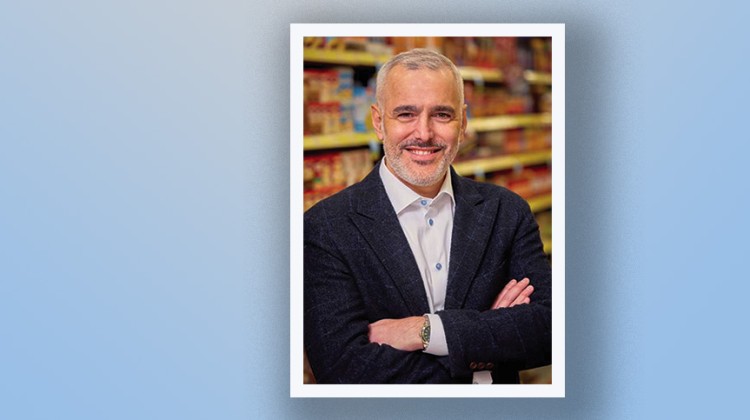
A few years back, when I was with Dollar General in the chief merchant’s seat, Fortune saw us as “a crafty mix of 7-Eleven-like convenience and Walmart-like low prices.” Yeah, but that description doesn’t begin to do justice to the strong value-and-convenience proposition of the value channel — a proposition that’s put Dollar General and Dollar Tree/Family Dollar among the country’s fastest-growing retailers, with over 35,000 U.S. stores and plans for more. What incredible reach. It should make every smart marketer pause and think hard about how to accelerate in this channel.
 Not only that, the dollar class of trade is making strong inroads into grocery. If I asked you to guess the fastest-growing U.S. food retailers by share of household spend, what would you say? Walmart? Amazon? Nope. It’s our friends in the dollar store channel. They’re seeing increased wallet share and more monthly visits than grocery and mass this year.
Not only that, the dollar class of trade is making strong inroads into grocery. If I asked you to guess the fastest-growing U.S. food retailers by share of household spend, what would you say? Walmart? Amazon? Nope. It’s our friends in the dollar store channel. They’re seeing increased wallet share and more monthly visits than grocery and mass this year.
So why don’t CPG marketers always view dollar as a strategic, highly lucrative channel? Maybe it’s because of its unique challenges and opportunities: Like a vast number of doors, a limited SKU environment and differentiated value proposition. Don’t be scared off. You can profitably create products, drive awareness and convert more customers in this channel. All while keeping your shopper cost-to-serve down. How? Take a cue from some former merchants and current suppliers who shared their experience and insights at our recent omnicommerce excellence event for CPG leaders:
• Look through the core consumer’s lens. Cash-strapped with household income of less than $40,000, she’s been hit hard by inflation. Decreased SNAP benefits have cut nearly $100 in monthly grocery spending. She’s focused on essentials, forgoing discretionary goods like housewares and apparel. It’s absolutely critical that she sees high value in your product, or it will fail here. Know her motivations. Her shopping behaviors. Her paycheck cycle. And her evolving needs.
• Don’t just simply reapply strategies used in grocery or mass. It often takes customization of price pack architecture or other innovation to get to a more accessible price point for this shopper. Remember, these consumers are looking for low-priced essentials and will trade down in pack size to reduce weekly spending.
• Adopt a retail category manager’s mindset and use robust data for storytelling that effectively positions and differentiates your product.
• Understand new opportunities like multi-tier value pricing, a mix of national brands and private label and expanded refrigerated offerings. Where do you fit? Make sure you’re carefully analyzing all available market research to have the insights needed to know how your brand can best perform in this space — with the right assortment, innovation and price.
• Take customized approaches to single-price point, multi-price point and close-out retailers. When possible, use local demographics to inform specific store assortments and product mixes.
• Focus on P&L management. With limited SKU, shelf and buying practices that generally don’t include bulk orders, dollar stores have a lot of buying muscle. To meet the challenge, think like a true joint business partner, collaborating on what’s needed for long-term profitability and growth for both parties. Explore new product category ideas that increase trip frequency and basket size. Partner to optimize supply chain and inventory management across thousands of doors.
• Don’t forget those higher income dollar shoppers who were pleased to discover quality brands at low prices during the pandemic. How can you work with your retail partner to promote stickiness and retention?
• Keep your eye on digital commerce, still in its early years here, but retailers are expanding their media networks to enable brand partners to better engage their consumers.
My final tip: Ensure your team has strong channel-specific consumer, merchandising and supply chain expertise to ensure a strong partnership with retailers and strong returns on your investment in the channel. A CPG company recently reached out since they were suffering major profitability challenges in the channel. They’d tried numerous fixes and were resigned to walking away. We were able to dig deep to identify significant operating efficiencies and right-size their pricing, creating custom SKUs with high value for this shopper. The result? Their P&L dramatically improved in just six months.
I may be biased, given my experiences, but trust me, the dollar channel will only continue to get stronger as it matures. It’s time to give it the strategic respect it deserves. Think, how can your team better use it in the future to reach your consumer and accelerate profitable growth?
To join a future MPG “Driving OmniCommerce Retail Success” event for insights, contact: Pam Gaik at [email protected].
Jason Reiser is president of Market Performance Group.




You must be logged in to post a comment Login